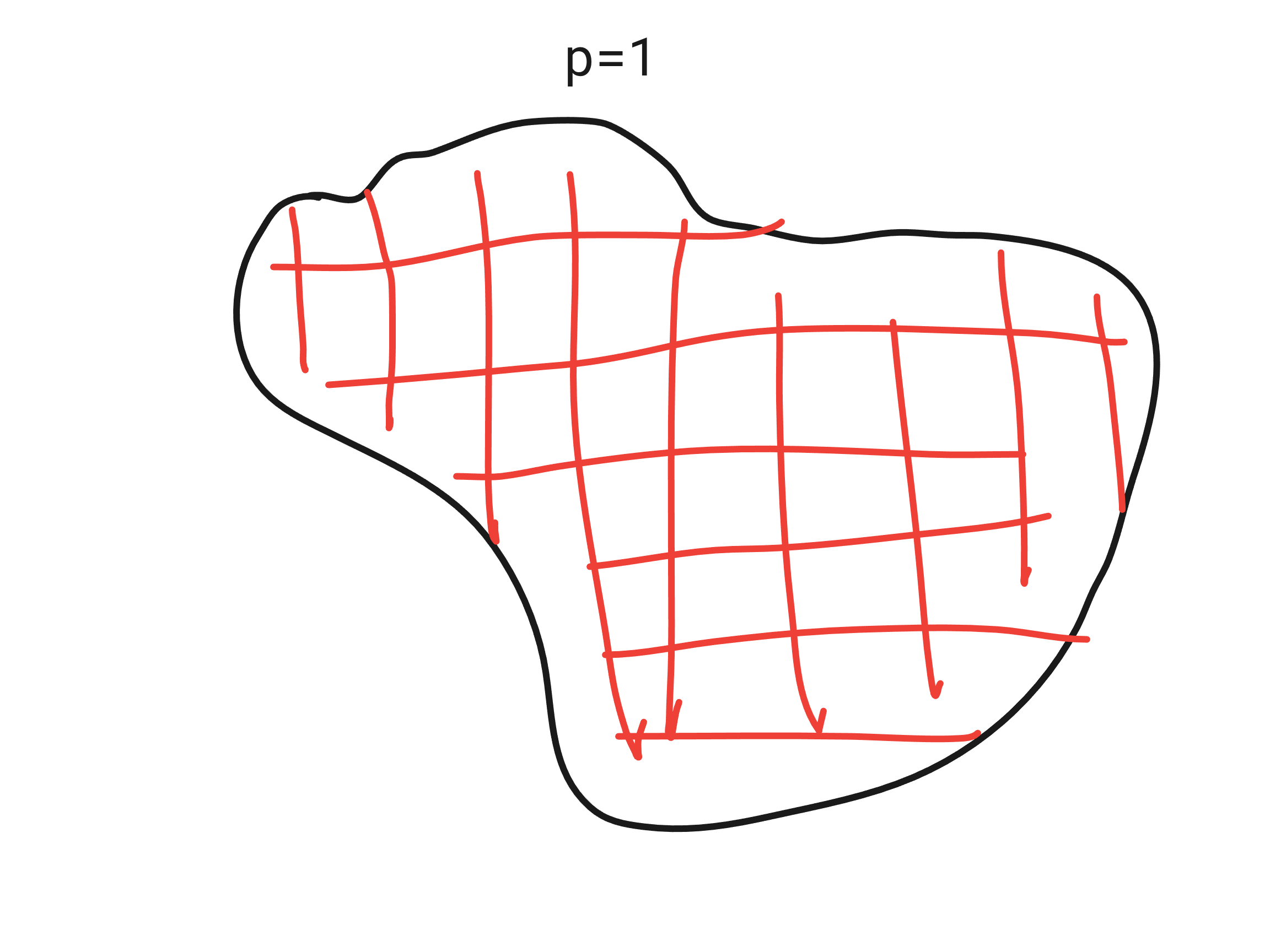Escardó’s Exhaustive Search: Part 2
pulling the rabbit out of the hat??
At the end of the previous blog, I mentioned that the topological properties of the Cantor space make it searchable via a constructive algorithm. Surprisingly, its not too much of a lift but still feels kinda magical. Not only are we deciding a total predicate without any a priori information other than continuity and compactness. Nothing else is known ahead of time: which bit indices will be queried, the number of bits that are required, or any details about the frontier itself. All of this information is extracted at execution time.

In a world of AI generated images, enjoy my hand-drawn rendition of a rabbit in a hat1. I know it is shit. Sorry.
haskell wizardry
sme :: Pred -> IO [Prefix]
sme p = go IM.empty where
go asg = case evalP p asg of
Right True -> pure [asg]
Right False -> pure []
Left i -> do
f0 <- go (IM.insert i False asg)
f1 <- go (IM.insert i True asg)
pure (f0 ++ f1)This performs a determinsitic DFS of the decision tree induced by the predicate via a partial oracle that answers onl ythe bits present int eh current prefix and raises a Need exception when demands an unknown bit index (this is all covered in the previous blog, nothing new here).
In this case, at node we now have three cases:
evalPreturnsTrue= is already a constant on cylinder set so we can record and returnevalPreturns False, so so the entire branch can be pruned- It raises
Need iso we branch to and .
The result of this procedure is , which represents the set of minimal true prefixes (an antichain2 fo finite with on ). Topologically, the preimage (which represents the set of satsifying assignments) can be expressed as the following disjoint union of cylinders

Imagine each prefix as carving out a subcube (cylinder set) of all points that agree with . Then taking the union fills up the region where . By compactness, there is always a finite subcover but our algorithm refines this so that they are also disjoint.
examples
-- fib-eventually (7 cylinders)
\x -> any (\f -> f < 30 && x f) (takeWhile (< 30) fibonacci)This checks: “Does the infinite binary sequence x have True at any Fibonacci
position < 30?”
The 7 cylinders represent the minimal decision tree:
- If
x[1] = True= predicate isTrue(fib 1) - Else if
x[2] = True= predicate isTrue(fib 2) - Else if
x[3] = True= predicate isTrue(fib 3) … and so on for positions 5, 8, 13, 21
-- prime-eventually (8 cylinders)
\x -> any (\p -> p < 20 && x p) (takeWhile (< 20) primes)This computes primes on-demand from primes = filter isPrime [2..] (infinite list), then checks if x is True at any prime position < 20. The 8 cylinders correspond to checking positions 2, 3, 5, 7, 11, 13, 17, 19 in
sequence.
-- collatz-reaches-1 (942 cylinders!)
\x -> let collatz n = if even n then n `div` 2 else 3*n+1
orbit n = takeWhile (/= 1) (iterate collatz n)
in length (orbit (sum [i | i <- [0..9], x i] + 1)) < 50Again expanding this gives us:
- Takes first 10 bits of x, sums the indices where
x[i] = True, adds 1 - Computes the Collatz orbit of that number ( conjecture)
- Checks if the orbit reaches 1 in < 50 steps
Certain predicates over infinite sequences can be decided by examining only finite prefixes, and algorithms like sme can discover these finite characterizations. I wonder if there is something interesting in representing this as finite automata. In the next blog, we’ll go into some implications of introducing Randomness.
Footnotes
-
I came across this blog on Schrodinger’s equation when trying to come up with the intro, it seems pretty interesting. ↩
-
Each finite prefix (where is the local modulus of continuity3) defines a cylinder set . If a new finite prefix extends , then . A small exercise is to prove that there si no way for two distinct prefixes two be returned. Consequently, defiens an antichain under this extension order. Algorithmically, this is enforced by minimality and early stopping. ↩
-
Recursive footnoting is surely a crime somewhere. Anyways, for every infintie stream , there exists some finite set of indices such that for if is another sream and for all , then . It is essentially the collection of coordinates of that actualy looks at when deciding its value at . ↩